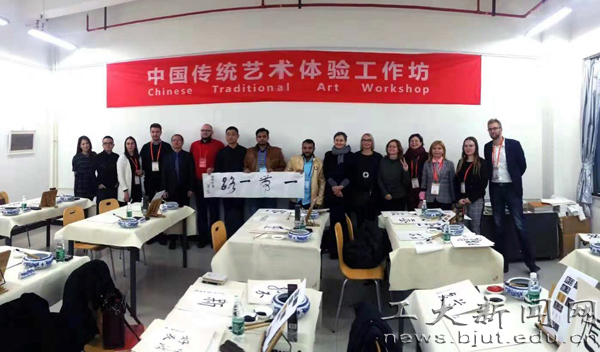The first “Belt and Road” Sino-Polish University Consortium art Festival, art&design competition, art & academic forum and art Workshop with the theme of “Boundless integration: the current status of Sino-Polish design and education” were held in BJUT on the afternoon of December 7.

The art& academic Forum invited scholars from member institutes of the Sino-Polish University Consortium to conduct academic discussions on environmental design, art education, and the status quo of Sino-Polish’ contemporary art and industry. Zhao Hang, Director of the Department of Environmental Art in the BJUT College of Art and Design, shared his experience and perception of concepts of cultivation, methods of operation and sustainable development of major construction. He focussed on integrated localization and international best practice. Liu Diqiu, Deputy Director of the Chongqing Jiaotong University International Bridge Art Aesthetics Joint Research Center, introduced his university talent cultivation training, speaking about the intersection and integration of disciplines, school-enterprise cooperation and collaborative education. Professor Katarzyna Sluchocka and Associate Professor Klaudia Grygorowicz-Kosakowska of the Poznan University of Technology Faculty of Architecture Art Department showed creative imagination and thinking through drawing, painting, sculpture and visual arts. Jong-han Lee, President of the Hoseo University Graduate School of Modeling Fusion Arts a, discussed the South Korean animation industry.

Following the art & academic forum, guests and students attended workshops on Chinese Traditional Art, Tie-dyeing and 3D Printing.’
The Chinese Traditional Art workshop focused on teaching and experiencing Chinese painting and calligraphy. Calligraphy and Chinese traditional painting are at the core of Chinese ink painting and an important bridge to learning Chinese traditional culture. Through the experience of Chinese traditional painting and calligraphy, guests and students from home and abroad have experienced the charm of Chinese tradition and improved their understanding of Chinese history and culture.

The Tie-dyeing art workshop focused on teaching and experiencing tie-dye technology. Tie-dyeing, known as “Jiao Xie” in ancient times, is a traditional manual printing and dyeing craft in China. It adopts anti-dyeing techniques such as sewing, tying, wrapping and clipping to dye, with high practicality and appreciation. Guests and students studied the theory and practice of the production process of Chinese traditional tie-dyeing craft.

The 3D Printing Art workshop used 3D printing technology to make shadow puppet props. Shadow Play is an ancient traditional Chinese folk art with a long history, originating in the Western Han Dynasty, flourished in the Tang Dynasty, and spreading to Western Asia and Europe during the Yuan Dynasty. Shadow puppet making is very complicated and with many working procedures. Making shadow puppets with modern 3D printing technology is an innovative approach. Guests and students experienced the integration of Chinese traditional culture and modern science and technology in the process of making shadow puppets.
The art & academic forum and art workshop, as a special activity of the first “Belt and Road” Sino-Polish University Consortium Art Festival and Art&Design Competition, showed spiritual elements of the“Belt and Road”initiative in artistic language, building a platform for academic exchange between Sino-Polish universities, promoting the mixing of Sino-Polish cultures, and improving academic and cultural communication between the two countries.






